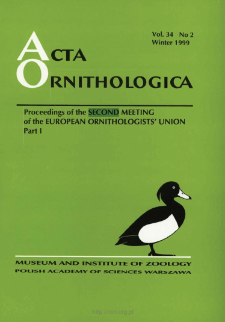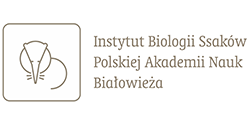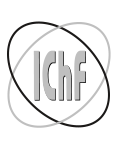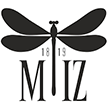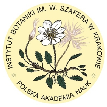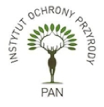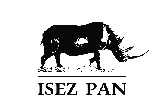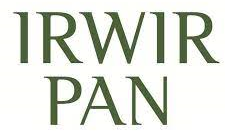- Search in all Repository
- Literature and maps
- Archeology
- Mills database
- Natural sciences
Advanced search
Advanced search
Advanced search
Advanced search
Advanced search

Object
Title: Effects of lake morphometry, emergent vegetation and shore habitat on breeding bird communities
Inny tytuł:
Acta Ornithologica, vol. 34, no. 1 ; Wpływ morfometrii jezior, roślinności wynurzonej i charakteru pobrzeży na zgrupowania ptaków lęgowych
Współtwórca:
Polska Akademia Nauk. Muzeum i Instytut Zoologii
Wydawca:
Muzeum i Instytut Zoologii PAN
Miejsce wydania:
Opis:
Bibliogr. p. 33-34 ; P. [27]-35 ; 27 cm ; Abstract in Polish. Taxa in Latin
Typ obiektu:
Abstrakt:
The aim of this study was to investigate the role of lake morphometry, emergent vegetation and the surrounding habitat on breeding bird communities. The analysis was based on the published data covering breeding bird communities of 18 lakes in Western Poland. Seven habitat variables were used in the analysis: lake area, length of shore line, maximum depth, area of rushes, length of shoreline covered by emergent vegetation, length of shoreline covered by forest and presence of islands. A stepwise multiple regression analysis revealed that most of the variation in the total bird species richness was explained by the length of shoreline covered by emergent vegetation. The number of water bird species was predicted by the lake area, since the number of reed and bush birds was dependent on the area of rushes. The most important factors determining the total number of pairs were the lake area and the area of rushes. The number of pairs of water birds was dependent on the lake area and the maximum depth. The density of water birds was negatively correlated with the area of rushes and positively with the lake area. The number of pairs of water birds was statistically higher on lakes with islands than on those without. The abundance of reed and bush birds correlated positively with the area of rushes, hence the density was dependent on the maximum depth and the area of rushes. There was no effect of shoreline covered by forest on the abundance of studied groups of birds.
Czasopismo/Seria/cykl:
Tom:
Zeszyt:
Strona pocz.:
Strona końc.:
Szczegółowy typ zasobu:
Format:
Identyfikator zasobu:
Źródło:
MiIZ PAN, call no. P.257, Vol. 34, No 1 ; MiIZ PAN, call no. P.4568, Vol. 34, No 1 ; click here to follow the link
Język:
Prawa:
Creative Commons Attribution BY 3.0 PL license
Zasady wykorzystania:
Digitalizacja:
Museum and Institute of Zoology of the Polish Academy of Sciences
Lokalizacja oryginału:
Library of the Museum and Institute of Zoology of the Polish Academy of Sciences
Dofinansowane ze środków:
Programme Innovative Economy, 2010-2014, Priority Axis 2. R&D infrastructure ; European Union. European Regional Development Fund
Dostęp:
Object collections:
- Repozytorium Cyfrowe Instytutów Naukowych > Kolekcje Partnerów > Muzeum i Instytut Zoologii PAN > Czasopisma
- Repozytorium Cyfrowe Instytutów Naukowych > Kolekcje Partnerów > Muzeum i Instytut Zoologii PAN > Wydawnictwa MiIZ PAN > Acta Ornithologica
- Repozytorium Cyfrowe Instytutów Naukowych > Piśmiennictwo > Czasopisma/Artykuły
Last modified:
Feb 4, 2025
In our library since:
May 20, 2014
Number of object content downloads / hits:
703
All available object's versions:
https://rcin.org.pl./publication/61070
Show description in RDF format:
Show description in RDFa format:
Show description in OAI-PMH format:
| Edition name | Date |
|---|---|
| Effects of lake morphometry, emergent vegetation and shore habitat on breeding bird communities / Kosiński, Ziemowit | Feb 4, 2025 |
Objects Similar
Kosiński, Ziemowit
Kuźniak, Stanisław (1933– )
Tryjanowski, Piotr Hromada, Martin (1969– ) Antczak, Marcin
Kujawa, Krzysztof
Surmacki, Adrian Stępniewski, Janusz
Wesołowski, Tomasz (1950– ) Tomiałojć, Ludwik (1939– ) Mitrus, Cezary Rowiński, Patryk Czeszczewik, Dorota
Jabłoński, Bolesław (1937– )

 INSTYTUT ARCHEOLOGII I ETNOLOGII POLSKIEJ AKADEMII NAUK
INSTYTUT ARCHEOLOGII I ETNOLOGII POLSKIEJ AKADEMII NAUK
 INSTYTUT BADAŃ LITERACKICH POLSKIEJ AKADEMII NAUK
INSTYTUT BADAŃ LITERACKICH POLSKIEJ AKADEMII NAUK
 INSTYTUT BADAWCZY LEŚNICTWA
INSTYTUT BADAWCZY LEŚNICTWA
 INSTYTUT BIOLOGII DOŚWIADCZALNEJ IM. MARCELEGO NENCKIEGO POLSKIEJ AKADEMII NAUK
INSTYTUT BIOLOGII DOŚWIADCZALNEJ IM. MARCELEGO NENCKIEGO POLSKIEJ AKADEMII NAUK
 INSTYTUT BIOLOGII SSAKÓW POLSKIEJ AKADEMII NAUK
INSTYTUT BIOLOGII SSAKÓW POLSKIEJ AKADEMII NAUK
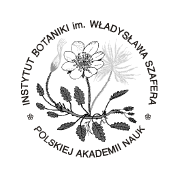 INSTYTUT CHEMII FIZYCZNEJ PAN
INSTYTUT CHEMII FIZYCZNEJ PAN
 INSTYTUT CHEMII ORGANICZNEJ PAN
INSTYTUT CHEMII ORGANICZNEJ PAN
 INSTYTUT FILOZOFII I SOCJOLOGII PAN
INSTYTUT FILOZOFII I SOCJOLOGII PAN
 INSTYTUT GEOGRAFII I PRZESTRZENNEGO ZAGOSPODAROWANIA PAN
INSTYTUT GEOGRAFII I PRZESTRZENNEGO ZAGOSPODAROWANIA PAN
 INSTYTUT HISTORII im. TADEUSZA MANTEUFFLA POLSKIEJ AKADEMII NAUK
INSTYTUT HISTORII im. TADEUSZA MANTEUFFLA POLSKIEJ AKADEMII NAUK
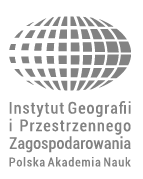 INSTYTUT JĘZYKA POLSKIEGO POLSKIEJ AKADEMII NAUK
INSTYTUT JĘZYKA POLSKIEGO POLSKIEJ AKADEMII NAUK
 INSTYTUT MATEMATYCZNY PAN
INSTYTUT MATEMATYCZNY PAN
 INSTYTUT MEDYCYNY DOŚWIADCZALNEJ I KLINICZNEJ IM.MIROSŁAWA MOSSAKOWSKIEGO POLSKIEJ AKADEMII NAUK
INSTYTUT MEDYCYNY DOŚWIADCZALNEJ I KLINICZNEJ IM.MIROSŁAWA MOSSAKOWSKIEGO POLSKIEJ AKADEMII NAUK
 INSTYTUT PODSTAWOWYCH PROBLEMÓW TECHNIKI PAN
INSTYTUT PODSTAWOWYCH PROBLEMÓW TECHNIKI PAN
 INSTYTUT SLAWISTYKI PAN
INSTYTUT SLAWISTYKI PAN
 SIEĆ BADAWCZA ŁUKASIEWICZ - INSTYTUT TECHNOLOGII MATERIAŁÓW ELEKTRONICZNYCH
SIEĆ BADAWCZA ŁUKASIEWICZ - INSTYTUT TECHNOLOGII MATERIAŁÓW ELEKTRONICZNYCH
 MUZEUM I INSTYTUT ZOOLOGII POLSKIEJ AKADEMII NAUK
MUZEUM I INSTYTUT ZOOLOGII POLSKIEJ AKADEMII NAUK
 INSTYTUT BADAŃ SYSTEMOWYCH PAN
INSTYTUT BADAŃ SYSTEMOWYCH PAN
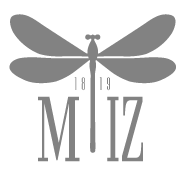 INSTYTUT BOTANIKI IM. WŁADYSŁAWA SZAFERA POLSKIEJ AKADEMII NAUK
INSTYTUT BOTANIKI IM. WŁADYSŁAWA SZAFERA POLSKIEJ AKADEMII NAUK
